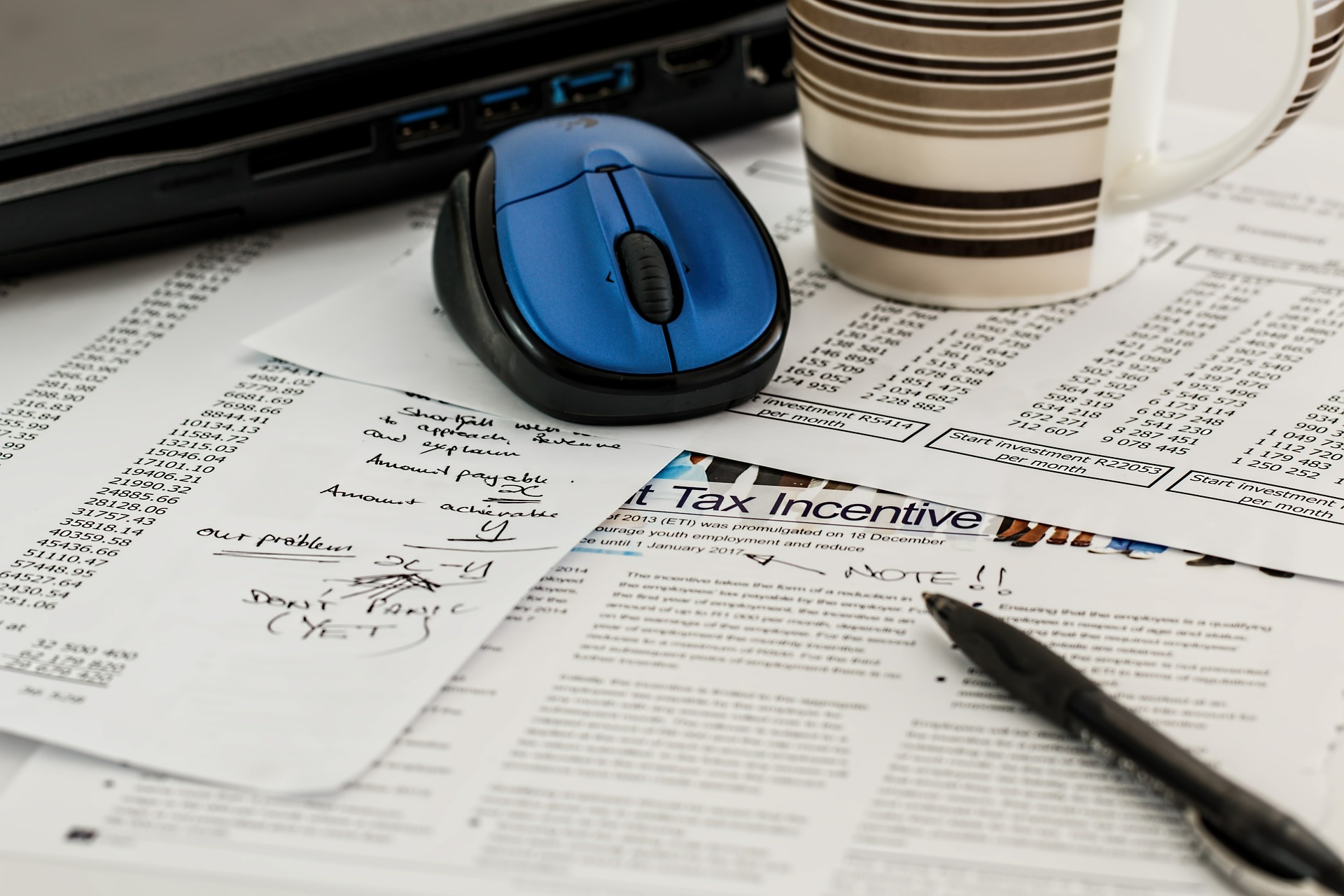Long term liabilities can be a positive or a negative for your business, depending on how you handle them. In this post, we’ll go over what they are, how they affect your business, and how to manage them.

What are Long Term Liabilities?
Long term liabilities are financial obligations that your company does not have to pay immediately. You can consider any debt a long term liability if it is not due within one year. If your business’s operating cycle is more than a year, you can review the due dates and move them to short term liabilities based on this cycle.
This type of long term debt is also called noncurrent liabilities. That distinguishes them from current liabilities, which are due much sooner. These short term liabilities can be, for instance, supplier invoices on Net 30 payment terms, your power bill, and office space rental.
Your bookkeeper would list long term liabilities separately from current liabilities on your balance sheet. The long term liabilities section may include items like loans and deferred tax liabilities. If applicable, you may also find debentures and pension obligations there. (More on this below!) Your bookkeeper should separate these items to show a more accurate picture of your business’s current liquidity. You can also see from this what your ability is to pay the current liabilities on time. This is because you will not be looking at huge debt upfront but only what’s coming up due.
You are responsible for paying short term liabilities with your current business assets. You can pay long term liabilities, however, through various business activities, both current and future. If you are refinancing current liabilities into long term liabilities, then you can keep them in the long term section since they will no longer be due within 12 months.
Types of Long Term Liabilities

Your business can choose to finance its operations with long term debt. However, we recommend trying this option only if you can safely project enough cash flow for repayment. You may not be confident that your business can generate enough to pay on time. In this case, the loan will probably be more trouble than it’s worth. Note also that this type of financing is usually more expensive in the long run than other options like short term loans.
Mortgages and Loans
Loans are agreements between a business and a lender, usually an accredited financial institution. The business borrows money and agrees to repay it over a set period of time. Loans are usually contracted with interest. Loans are like notes payable, but the repayment period is longer. Notes payable also usually do not include interest.
Mortgages are legal agreements between a business and a creditor, usually a bank. The business will put up an asset, usually a property, as security for a loan. That means the bank can take the property if the loan is unpaid, but must release all claims to the property once the business pays the loan and interest in full.
Bonds Payable
Long term business financing is usually repaid over years. Most come in the form of bonds. Bonds are issued by companies and corporations to raise capital. They require periodic interest payments and scheduled principal repayments. You would likely pay interest sooner and make payments on the principal over the life of the bond.
Lease Obligations
Leases are agreements between an entity that has an asset and an entity that needs it. They are called the lessor and the lessee. The lessor exchanges the use of the asset for periodic lease payments from the lessee. It’s like a rental agreement, but with terms spanning more than one year. The lease payments are therefore long term liabilities.
The lease obligation can involve more than cash payments. For instance, a lessee may agree to pay insurance, property taxes, interest and amortized charges.
The lease contract is usually called a finance lease. It may be called a capital lease if it meets certain criteria. For example, the lessee usually returns the leased asset at the end of the lease period. With capital leases, they get ownership of the asset after the contract is fulfilled. In these cases, the payment period of the lease should be no less than 75% of the asset’s useful life. The lease payments’ value should also be no less than 90% of the asset’s market value. The lessee simply has the option to purchase the asset at a discount.
Deferred Taxes

You can consider deferred taxes as long term liabilities when they extend to future tax years. A business incurs deferred tax liabilities when it does not pay taxes on certain accounting income types. Your accountant would compute this temporary difference between your taxable income and your income as reflected in the books.
Tax laws in certain countries like the US allow these delays on tax payments. However, we cannot advise doing this across the board. Deferred taxes can heavily impact your cash flow management and financial statements. When the amount of profit that shows on your income statement is larger than on your tax return, you create a deferred tax liability.
Sometimes, you get a deferred tax liability because accounting rules do not always run alongside tax laws. So, you can have pre-tax earnings on your income statement that are bigger than the taxable income that shows on your tax return. This happens when you use accrual accounting because tax computation is done on the cash basis method of accounting. This kind of deferred tax liability is not a huge issue.
Contingent Liabilities
Contingent means something that happens only if specific circumstances or conditions are present. A contingent liability, therefore, exists only when you experience a particular outcome. This outcome, when it happens, will then denote an obligation or loss. For example, you can incur contingent liabilities when you accept product returns, expect to fulfill warranty obligations, expect investigations or lawsuits.
Basically, these long term liabilities are any expected financial losses that you can estimate and record, or at least disclose. When you can estimate the amount that you will need to pay out, you should set it aside for when you need to pay it.
How to Calculate Long Term Liabilities
To get ready to calculate long term liabilities, take a look at your balance sheet. Your long term liabilities will be in the section for long term debt or noncurrent liabilities. However, the long term liabilities that are coming up for payment should be in the short term or current liabilities section. Your bookkeeper should have moved them to s separate part of the current liabilities section.
Once you have them located, check the due dates. The current portion of long term liabilities are the ones that are due within the next year or within your business’s next operating cycle. Note that any tax liabilities you have will not be in this same section.
Calculating the Present Value of Future Payments
Present Value, represented as PV in the formula below, is the current value of a sum of money. This is distinct from the different value that it will have in the future. (The value changes because it gets invested and compound at a certain rate.)
The future value, represented as FV, is divided by a factor of 1 + i, representing the interest rate, to the power of n, representing the number of payment periods between the present date and the future date: PV = FV / (1+i)n.
Calculating Interest Expense
Interest expense is the amount of money you will owe in interest when you take out a loan or mortgage. It can be simple or compound interest, depending on your loan type.
You calculate simple interest expense by multiplying P, representing the Principal amount, by r, representing the rate of interest in decimal form, by t, representing the time period for repayment: I = Prt
You calculate compound interest by inserting how many times in each year the interest is compounded (n). Add a factor of 1 to the rate (r) divided by n, then multiply that by n times t: I = P(1 + r/n) (nt).
Impact of Long Term Liabilities on Financial Statements

Long term liabilities can look bad for a company if you don’t have a plan for dealing with them. They can also look worse than they actually are if you don’t record them properly.
Balance Sheet Impact
Investors and financial agencies as well as creditors and analysts look at your long term liabilities or debt. They use these numbers recorded on your financial statements to judge business solvency. That gives them an idea of whether a company can actually pay its debts. If the numbers don’t add up, your business can be seen as a bad bet. They won’t be lending you any more money. You also probably won’t be able to sell your business for much.
Income Statement Impact
The long term liabilities that you have listed on your balance sheet show the level of integrity of your business. If you are showing larger debts than equity, this is not good at all. Key persons such as investors will question the efficiency of your operations. The lack of confidence that this generates can spell more trouble down the line. You need to make sure that you manage debt promptly.
Frequently Asked Questions
What’s the difference between long term liabilities and equity?
The main difference between long term liabilities and equity in business is quite simple. The long term liabilities of a company are debts that the company owes that are due no less than a year in the future. The equity represents the ownership stake of the shareholders. You can calculate your business equity by subtracting the liabilities from the assets.
What Is EcomBalance?

EcomBalance is a monthly bookkeeping service specialized for eCommerce companies selling on Amazon, Shopify, Ebay, Etsy, WooCommerce, & other eCommerce channels.
We take monthly bookkeeping off your plate and deliver you your financial statements by the 15th or 20th of each month.
You’ll have your Profit and Loss Statement, Balance Sheet, and Cash Flow Statement ready for analysis each month so you and your business partners can make better business decisions.
Interested in learning more? Schedule a call with our CEO, Nathan Hirsch.
And here’s some free resources:
- Monthly Finance Meeting Agenda
- 9 Steps to Master Your Ecommerce Bookkeeping Checklist
- The Ultimate Guide on Finding an Ecommerce Virtual Bookkeeping Service
- What Is a Profit and Loss Statement?
- How to Read & Interpret a Cash Flow Statement
- How to Read a Balance Sheet & Truly Understand It
Conclusion
Every business owner needs to think carefully about long term debt before getting into trouble. These liabilities can be tempting because they are not due for a long time. However, they can creep up on you if you don’t watch them closely and avoid putting them off. Consider whether you can realistically afford higher interest payments before taking the plunge.








